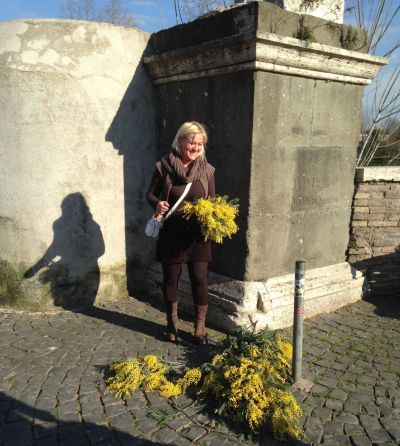In the language of flowers, the mimosa flower is rich in symbolism and meanings. Perhaps most notable is how the mimosa has been an emblem of femininity and freedom since 1946 for International Women’s Day (La Festa delle Donne), which takes place on March 8.
This emblematic tradition comes from Italy. Italian women chose yellow as the official color for the mimosa. At that time, it was accessible to everyone and could be easily worn on a jacket lapel. To offer a bouquet of mimosa is to deliver a message of friendship and love. The mimosa is bright and refers to the sunlight and summer. It symbolizes respect, elegance, dignity, abundance, and kindness. The mimosa stands for the return of sunny days and provides spiritual and emotional security.
Each year in Italy on March 8, you will see sellers of mimosas. Women buy them for each other to wear on their lapels. And men will also offer mimosas to their significant others as well as female friends and colleagues.
The mimosa could be well described as a ray of sunshine in the middle of winter! It perfumes our interiors delicately and brightens our gardens beautifully with its bright yellow color. In a vase, in a pot or in the ground, it can perfectly illuminate your balcony. Moreover, it acts as a natural antidepressant. So do not hesitate to plant it at home or simply buy it from a florist. You do not need to live in the South to have your own acacia mimosa, instead, grow it in your veranda or at the entrance of your house to shine up your winters!
While the mimosa tree and its beautiful yellow flowers are highly regarded in Italy, the non-native plant is largely considered a weed in the U.S. due to its invasive nature.
Cover photo: Mimosa flowers near Lake Albano, a small volcanic crater lake in the Alban Hills of Lazio, near Rome.



